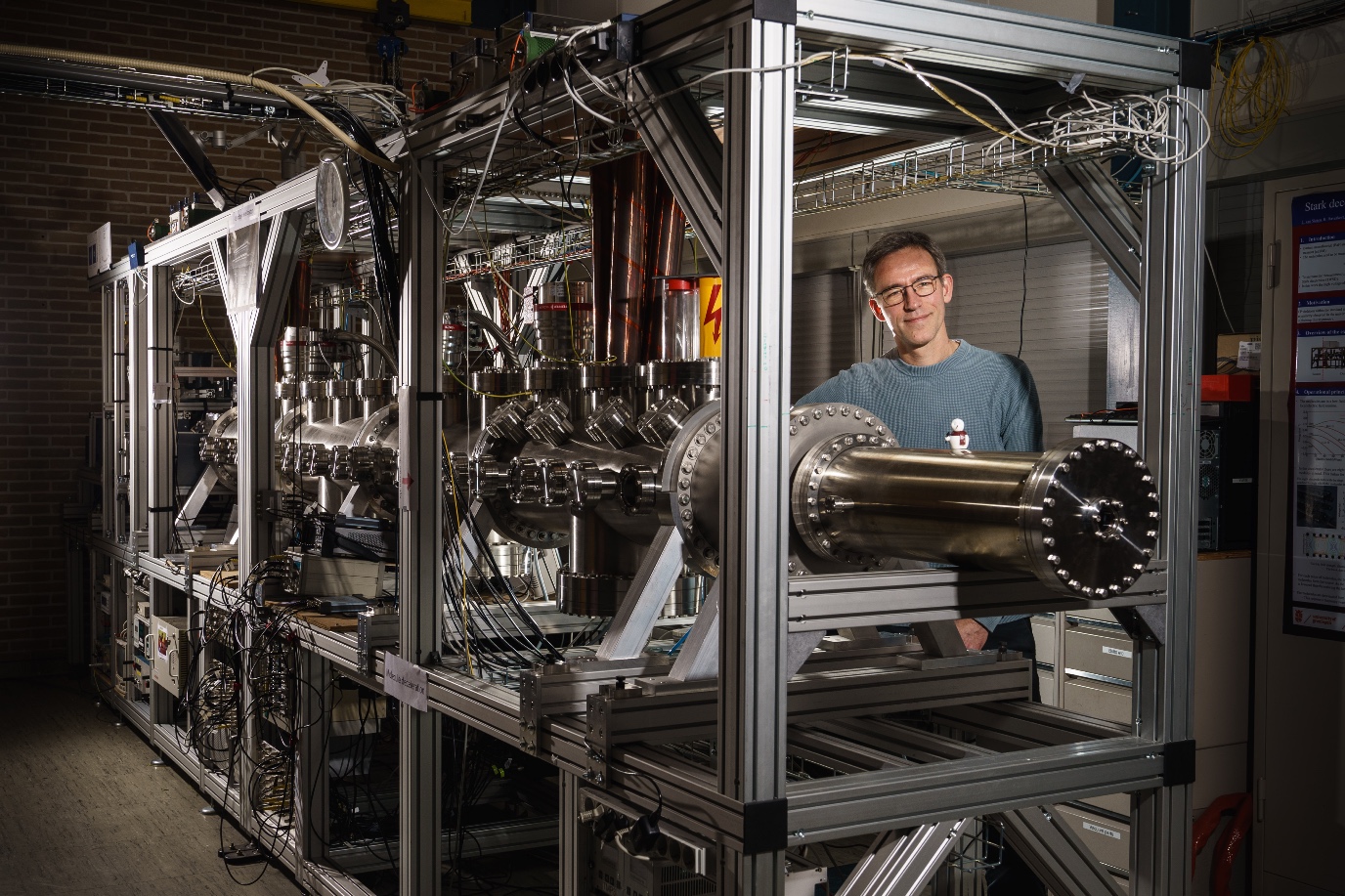Moleculen stilzetten
In zijn laboratorium bouwt natuurkundige Steven Hoekstra aan een opstelling die bestaat uit twee delen: een apparaat dat moleculen van barium-fluoride maakt, en een ander apparaat dat deze moleculen bijna stilzet om ze te kunnen onderzoeken. ‘In de grote versneller van CERN onderzoeken natuurkundigen deeltjes door ze met hoge snelheid op elkaar te laten botsen. Ik wil moleculen juist heel sterk vertragen, om er dan zeer nauwkeurige metingen aan te doen,’ legt Hoekstra uit. En dat allemaal om te testen of het Standaardmodel, de theorie over de kleinste deeltjes, klopt.



Het Standaardmodel voorspelt onder meer dat de negatieve lading van een elektron niet aan alle kanten van het deeltje hetzelfde is, iets wat nog nooit is gemeten. Als dat Hoekstra en zijn collega’s wel lukt én de metingen laten zien dat die afwijking anders is dan werd voorspeld, wijst dat erop dat het Standaardmodel niet volledig is. ‘Dit zou direct bewijs zijn dat ons huidige begrip van de materie tekortschiet.’
Hoekstra bouwt met zijn onderzoeksgroep al zeven jaar aan de meetopstelling en die is nu bijna klaar. De twee delen zijn nog niet samengevoegd, maar onafhankelijk werken ze al. Hoekstra en zijn team passen de opstelling voortdurend aan om zo uiteindelijk de optimale gevoeligheid te krijgen. ‘Iedere meting levert weer informatie op voor de volgende verbetering. Het is mooi te zien dat je idee zo stap voor stap werkelijkheid wordt.’ Er hebben inmiddels al verschillende generaties studenten en promovendi bijgedragen aan ontwerp, bouw en afstelling.
Het zelf bouwen van zo’n instrument is mooi werk, vindt Hoekstra. ‘Je moet alles zelf oplossen; bij problemen kun je geen klantenservice bellen.’ Hij is vrijwel dagelijks in het laboratorium te vinden, maar pakt nog maar zelden een schroevendraaier op. ‘Ik bouw nu een team van promovendi en studenten, allemaal met hun eigen inbreng. Dit is echt teamwerk en het is prachtig te zien hoe alles samenkomt.’
Tekst: FSE Science Newsroom | René Fransen
Foto’s: Reyer Boxem
In Makers van de RUG belichten we elke twee weken een onderzoeker die iets concreets heeft ontwikkeld: van zelfgemaakte meetapparatuur voor wetenschappelijk onderzoek tot kleine of grote producten die ons dagelijks leven kunnen veranderen. Zo dragen RUG-onderzoekers bij aan oplossingen voor grote wetenschappelijke en maatschappelijke uitdagingen.
Techniekonderwijs en -onderzoek maken bij de RUG al decennia deel uit van een breed palet aan sterke disciplines en landelijk werken we steeds intensiever samen met de vier technische universiteiten.
Eerdere portretten van 'Makers' vind je op de
overzichtspagina
Meer informatie
Steven Hoekstra
Meer nieuws
-
06 januari 2026
AI-phasie: kunstmatige intelligentie helpt bij taalgebrek
-
06 januari 2026
Beter zicht op de werkpaarden van ons lichaam
